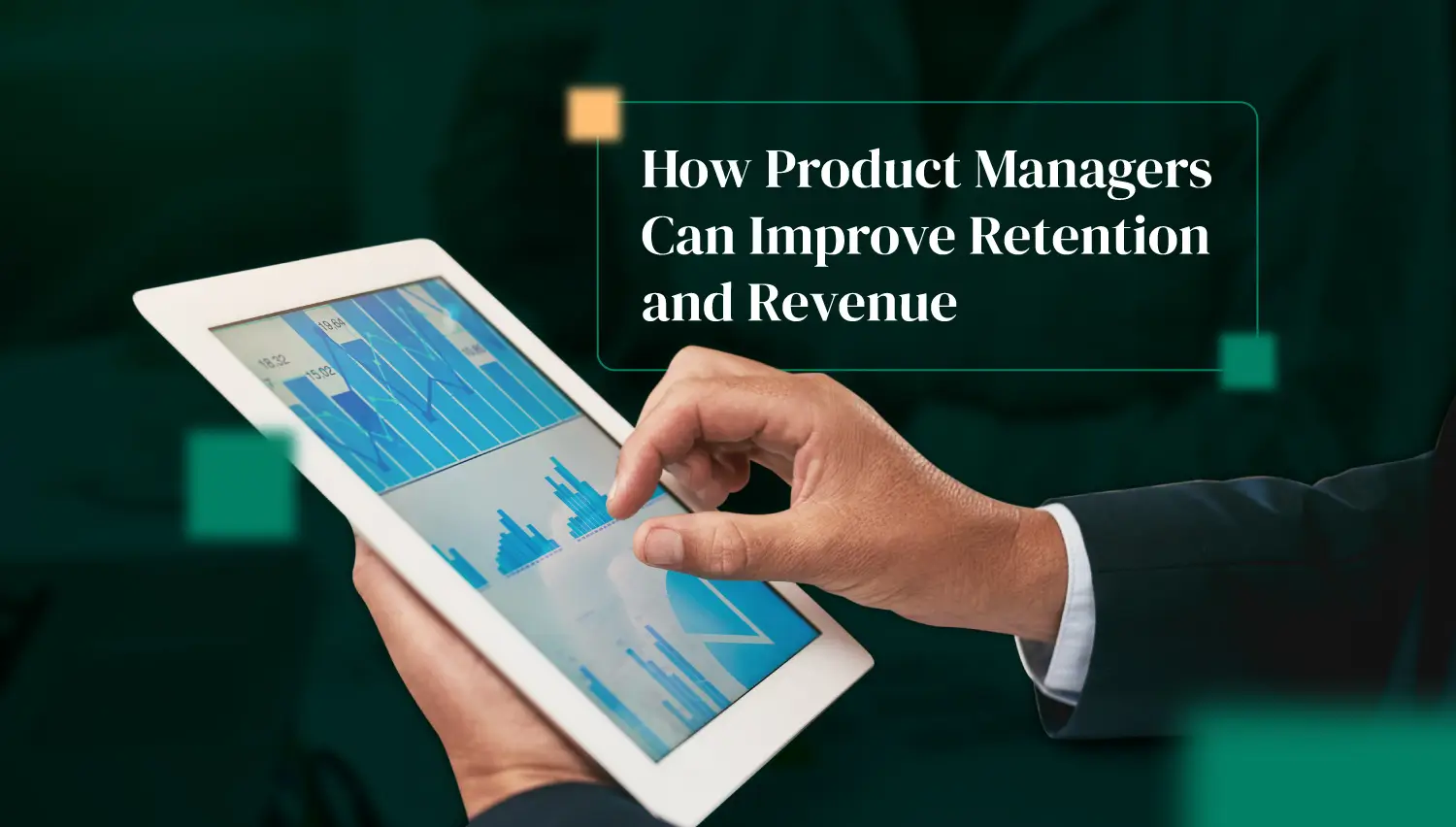I worked with a SaaS company that had just crossed $5M ARR and was adding customers faster than they could keep up. On the surface, growth looked healthy. But inside, sales, marketing, and engineering were pulling in different directions. Feature requests piled up without a clear process, release dates slipped, and customer feedback rarely made it back into product decisions.
When they hired a Product Manager, priorities tightened. A single roadmap replaced scattered to-do lists, launches synced with actual capacity, and improvements targeted the issues customers cared about most. Within months, the business felt less reactive and more deliberate. Momentum that showed up in both retention and revenue.
This isn't an isolated story. Product Managers consistently bring order, focus, and strategy to growing companies. Here's how they directly move the performance needle.
Why Product Managers Are a Strategic Lever for Business Performance
A good Product Manager isn't just there to "own the roadmap." They act as a strategic link between business goals and what the team actually delivers. By aligning priorities across sales, marketing, engineering, and customer success, they eliminate duplicated effort, shorten release cycles, and ensure every initiative supports measurable outcomes.
This alignment changes how the whole company operates. Customer feedback stops getting lost in spreadsheets and starts shaping development priorities. Marketing launches match actual release dates. Engineering focuses on features with the highest ROI instead of chasing ad-hoc requests. The result is a product that evolves in lockstep with customer needs, and a business that sees measurable gains in efficiency, satisfaction, and revenue.
Here's where those gains come from and why the impact of a strong Product Manager compounds over time.
The Hidden Cost of Operating Without Product Leadership
In a growing business, the absence of a Product Manager rarely looks like a crisis at first. Deadlines still get met (at least some of them). Features still ship. Customers still come through the door. But without a central point of ownership for product direction, the cracks widen quickly.
The hidden costs often include:
- Constant priority changes - Mid-sprint shifts that derail delivery schedules and erode team momentum.
- Duplicated efforts - Multiple teams solving the same problem without realizing it, wasting time and resources.
- Misaligned investments - Engineering hours spent on low-impact features instead of revenue-driving improvements.
- Customer dissatisfaction - Valuable feedback gathered but never acted on, leading to churn over time.
I saw this play out at a B2B platform scaling its engineering team. Without a Product Manager, the same core feature request was being tackled by two separate squads, each unaware of the other's work. At the same time, leadership was pushing mid-sprint priority swaps to satisfy a few vocal clients. Delivery dates slipped, and morale dipped.
When we brought in a Product Manager, the first step was consolidating all initiatives into a single, visible backlog. This eliminated duplicate work and locked priorities for each sprint. Within one quarter, they were shipping on schedule, and teams could see exactly how their work connected to business goals.
That's the kind of shift product leadership makes possible, turning scattered execution into a focused, long-term growth strategy.

How Product Managers Drive Clarity, Focus, and Measurable Impact
A strong Product Manager isn't just managing tasks; they're creating the structure and focus that allows a business to grow without losing direction. Their impact comes through a few key capabilities:
Turning Vision Into Roadmaps That Actually Ship
Without a Product Manager, roadmaps often live as vague wish lists or shifting priorities. A skilled Product Manager translates high-level business goals into clear, prioritized plans using frameworks like OKRs or RICE scoring. This ensures that every sprint delivers work tied directly to measurable outcomes – whether that's increasing retention, boosting NPS, or opening new revenue streams.
Outcome: Deadlines are predictable, resources are allocated efficiently, and leadership knows exactly what's coming next.
Bridging the Gaps Between Engineering, Design, and Sales
In most growing companies, communication silos cost more than anyone realizes. A Product Manager acts as a translator between departments, ensuring engineering understands market needs, sales knows what's possible, and design aligns with both.
Outcome: Features are built right the first time, sales pitches match reality, and launches run on schedule.
Transforming Customer Feedback Into High-Impact Decisions
Customer feedback is only valuable if it's acted on. A Product Manager establishes processes to collect, synthesize, and prioritize feedback so it informs the roadmap instead of getting lost in spreadsheets.
Outcome: Products evolve in step with user needs, adoption increases, and churn drops.
How to Set a Product Manager Up for Success
Hiring a Product Manager is only the first step. To get the full return on investment, companies need to be intentional about how the role is defined, integrated, and measured.
1. Match the right Product Manager profile to your business model
Not every Product Manager brings the same skill set. A SaaS company entering a new market might need someone with strong discovery and go-to-market skills. A complex platform business may benefit from a technically minded Product Manager who can work closely with engineering. The fit between role type and business stage directly impacts results.
2. Integrate them into the team with decision-making authority
A Product Manager without the ability to make calls on priorities quickly becomes a bottleneck instead of a leader. They should have the authority to set direction, adjust roadmaps, and align cross-functional teams without constant escalation to leadership.
3. Define the metrics and systems that will track their success
Clear success measures keep the role focused and accountable. Whether tracking retention rates, feature adoption, or time-to-market, a Product Manager's performance should be tied to tangible outcomes that reflect business priorities.
Product Manager Hiring Risks (and How to Mitigate Them)
Hiring a Product Manager is a strategic move, but if the role is poorly scoped or improperly integrated, it can create new challenges instead of solving old ones. These risks aren't about operating without a Product Manager; they're about failing to set them up for success.
Unclear Mandate from Day One
If a Product Manager walks in without a defined scope of responsibility, they'll spend critical early months piecing together expectations from different leaders. This leads to slow decision-making, unclear priorities, and frustration across the team. In the absence of a clear mandate, they risk becoming reactive order-takers instead of strategic drivers.
Mitigation: Before hiring, define the scope of authority, decision rights, and success criteria. Share this with all stakeholders so the Product Manager gets consistent direction from day one.
Overloading Them with Delivery and Discovery at the Same Time
It's tempting to hand every product-related responsibility to the new hire (customer interviews, data analysis, roadmap planning, sprint management, and stakeholder reporting). The result is a role spread too thin, unable to excel at either big-picture strategy or daily execution.
Mitigation: Decide whether the immediate business priority is exploring new market opportunities or executing existing plans. Align resources accordingly; this may mean assigning additional product analysts, project managers, or UX researchers to share the load.
Failing to Align Stakeholders on the Product Vision
Even the most capable Product Manager will struggle if leadership and department heads have conflicting ideas about product direction. Misalignment leads to constant roadmap revisions, tense cross-functional meetings, and products that feel inconsistent to customers.
Mitigation: Hold alignment workshops before and after the hire. Agree on a product vision, measurable business outcomes, and the non-negotiables for the next 6–12 months. Revisit these quarterly to keep the vision relevant as market conditions change.
Hiring for Today Without Thinking About Tomorrow
A hire who's perfect for your current challenges may be the wrong fit in 12–18 months. For example, a Product Manager who thrives in early-stage chaos may struggle with the structured processes needed at scale or vice versa. This mismatch can create a leadership gap at a critical growth stage.
Mitigation: Look for adaptability as a core skill. Ask candidates how they've evolved their approach across different growth stages. Consider succession planning during the hiring process, whether through role evolution or building a product leadership team over time.

The Right Product Manager Can Be a Force Multiplier Across Your Business
Bringing in a skilled Product Manager is one of the most effective ways to align your teams, sharpen your product strategy, and keep your customers coming back. They bridge the gap between vision and execution, ensuring every release, feature, and improvement serves a clear business goal.
The impact compounds over time (better retention, higher adoption, stronger revenue growth) because a well-led product function creates momentum that carries across the entire company. But that transformation only happens when you make the right hire and give them the mandate to lead.
With a clear strategy for defining the role and the right recruitment partner to help you find the best fit, a Product Manager isn't just another hire. They're an investment in the sustained health and growth of your business.
Use a Strategic Hiring Partner to Get the Right Product Manager in Place
A great Product Manager can transform how your business operates, but only if you hire the right person for the role and set them up for success. That means matching the profile to your stage of growth, aligning stakeholders around a shared vision, and giving the role the authority it needs to deliver measurable results.
That's exactly where a specialist recruitment partner like Somewhere can help. We don't just source candidates; we help you clarify what type of Product Manager you need, assess for both technical and strategic capability, and ensure the hire will thrive in your specific business environment.
With the right hire, you'll see the difference in faster delivery, smarter prioritization, and a product that keeps your customers engaged and your revenue growing. If you're ready to make that happen, fill out the contact form below, and let's start building the role that will unlock your next stage of growth.





